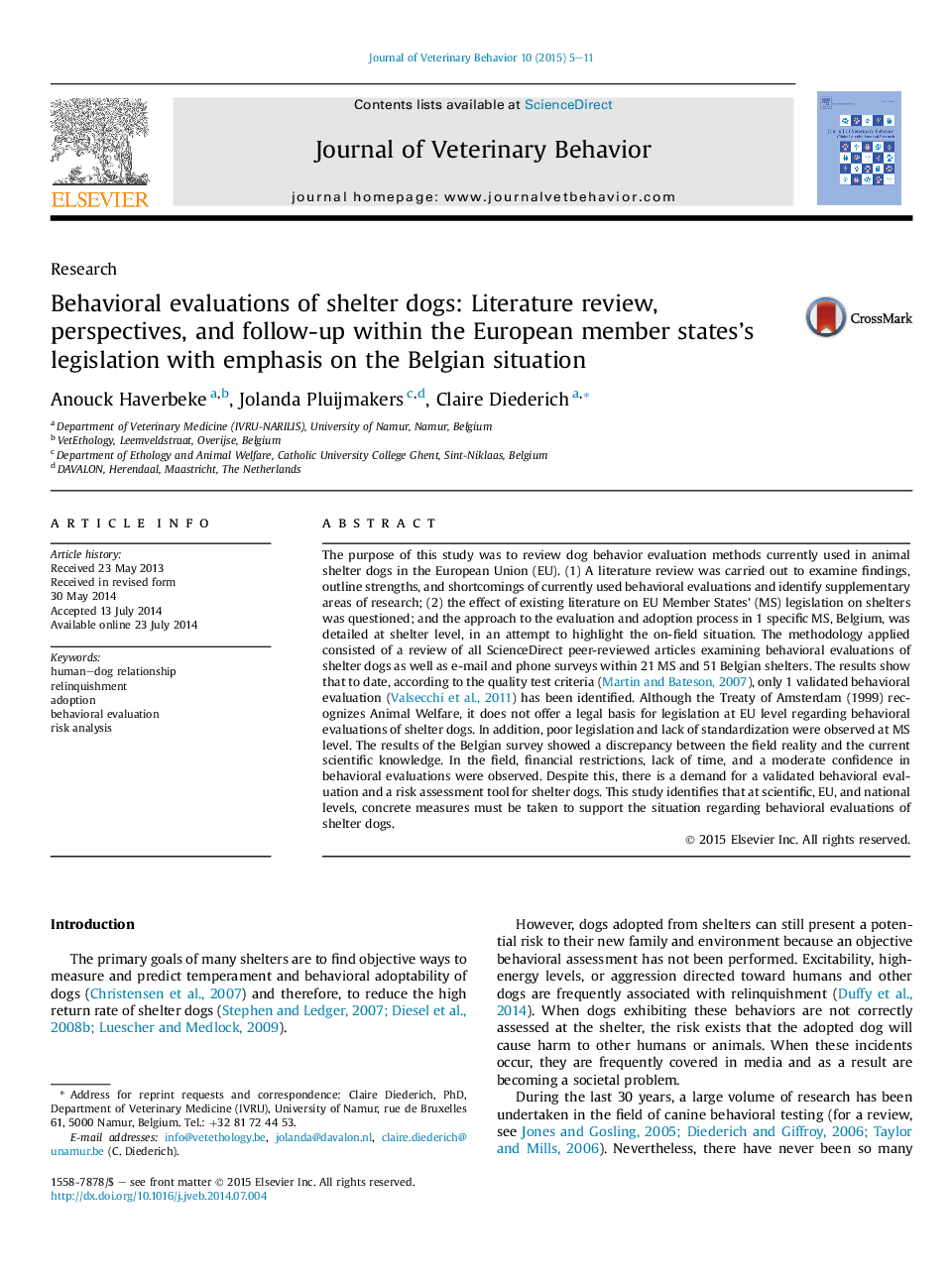| Article ID | Journal | Published Year | Pages | File Type |
|---|---|---|---|---|
| 2398788 | Journal of Veterinary Behavior: Clinical Applications and Research | 2015 | 7 Pages |
The purpose of this study was to review dog behavior evaluation methods currently used in animal shelter dogs in the European Union (EU). (1) A literature review was carried out to examine findings, outline strengths, and shortcomings of currently used behavioral evaluations and identify supplementary areas of research; (2) the effect of existing literature on EU Member States' (MS) legislation on shelters was questioned; and the approach to the evaluation and adoption process in 1 specific MS, Belgium, was detailed at shelter level, in an attempt to highlight the on-field situation. The methodology applied consisted of a review of all ScienceDirect peer-reviewed articles examining behavioral evaluations of shelter dogs as well as e-mail and phone surveys within 21 MS and 51 Belgian shelters. The results show that to date, according to the quality test criteria (Martin and Bateson, 2007), only 1 validated behavioral evaluation (Valsecchi et al., 2011) has been identified. Although the Treaty of Amsterdam (1999) recognizes Animal Welfare, it does not offer a legal basis for legislation at EU level regarding behavioral evaluations of shelter dogs. In addition, poor legislation and lack of standardization were observed at MS level. The results of the Belgian survey showed a discrepancy between the field reality and the current scientific knowledge. In the field, financial restrictions, lack of time, and a moderate confidence in behavioral evaluations were observed. Despite this, there is a demand for a validated behavioral evaluation and a risk assessment tool for shelter dogs. This study identifies that at scientific, EU, and national levels, concrete measures must be taken to support the situation regarding behavioral evaluations of shelter dogs.
